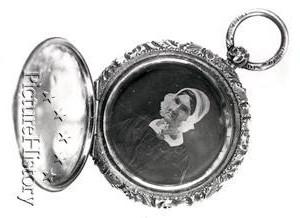Jane Findlay – From Farm to Table to the White House

Jane Irwin Findlay was one of the earliest settlers of Cincinnati. She was active in both early Cincinnati and Washington societies, accompanying her statesman husband General James Findlay during his terms in Congress. During the short presidency of William Henry Harrison, Jane, along with her niece Jane Harrison, fulfilled some of the duties of First Lady
Jane Irwin Findlay was born in Mercersburg, a small town in Franklin County, Pennsylvania on June 22, 1769. Later in life she moved to an emerging Cincinnati, which at was just a small village of several thousand people at the time. She and James became prominent citizens of Cincinnati through civic service and substantial land holdings.
Jane and James Findlay played many roles in the early development of Cincinnati. James Findlay was a prominent businessman and public official who served two non-consecutive terms as mayor of Cincinnati. He previously served as a General in the War of 1812, constructing Fort Findlay in modern-day Findlay, Ohio.
The Findlays were good friends with President-to-be William Henry Harrison, who was a frequent guest at the Findlay family home, which was located on Broadway, between 3rd and 4th Streets. Although she wasn’t a mother, Jane spent much time with her niece, Jane Findlay Irwin Harrison. She was involved in the Washington world when James served in Congress during the presidency of John Quincy Adams and the first term of Andrew Jackson. She traveled to Washington again during the Harrison presidential campaign and later lived in the White House to assist her niece, Jane Findlay Harrison as hostess of the White House.
Upon his death in 1835, James Findlay donated his substantial land holdings to the city of Cincinnati. On this land, the city founded Findlay Market to provide a public market space for the growing northern portion of Over-the-Rhine. James Findlay’s will stipulated that Jane should continue to draw rents from the land until her death, thus Findlay Market did not open until 1852, one year after Jane’s death. Jane Irwin Findlay passed away in 1851. She is buried with her husband at Spring Grove Cemetery.
Images
